
It turns out that even when their groupings have a name, it's not necessarily scientifically backed. "We don't wind up using these terms in any kind of serious discussion, but they're entertaining to bring up in casual conversation," Birds and Blooms bird expert Kenn Kaufman says of these "terms of venery" that originated in hunting. "They could have been useful to members of the nobility going out hunting in the Middle Ages in Europe, hoping to bag a brace of ducks," says Kenn. Furthermore, although some are aptly named, such as the more commonly known "murder of crows," some creatures with collective terms don't congregate in groups. As Kenn points out, "It's rare to see enough owls together to constitute a parliament of owls, but it is still fun to say!"
An Exaltation of Larks
The horned lark is the only lark native to North America. It generally forages in flocks (except when it is nesting) and does it while walking or running on the ground, picking up seeds, insects and low-hanging berries as it goes. But it sings from high in the sky, either from perches or while flying.
A murmuration of Starlings
Diese Geschichte stammt aus der October/November 2024-Ausgabe von Birds & Blooms.
Starten Sie Ihre 7-tägige kostenlose Testversion von Magzter GOLD, um auf Tausende kuratierte Premium-Storys sowie über 8.000 Zeitschriften und Zeitungen zuzugreifen.
Bereits Abonnent ? Anmelden
Diese Geschichte stammt aus der October/November 2024-Ausgabe von Birds & Blooms.
Starten Sie Ihre 7-tägige kostenlose Testversion von Magzter GOLD, um auf Tausende kuratierte Premium-Storys sowie über 8.000 Zeitschriften und Zeitungen zuzugreifen.
Bereits Abonnent? Anmelden

Basics of Hydroponics
Use these top tips and plant picks to have a successful soil-free garden
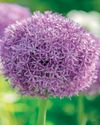
Rooted in Resilience
These hardy perennials will thrive in most zones
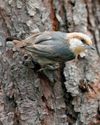
Social and Supportive
Brown-headed nuthatches take a helpful approach to raising their young
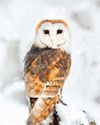
All About Owl Pellets
And why you should give a hoot about them
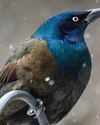
Ask the Experts
Advice from our pros about houseplants, bird feeding and more

BRING THE OUTDOORS IN
Making a terrarium is about as close as you can get to a Zen DIY project. Once you have gathered the proper materials and squared away your plant selections, it's as simple as layering it all together and watching your mini ecosystem thrive. Here, I'll walk you through my foolproof process and cover all the required elements for good filtration, healthy soil, strong root growth and resistance against fungus and disease.

GROW THIS. NOT THAT
Six easy-to-grow houseplants—and six that may not be the right choice for you
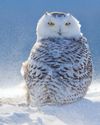
Winter MAGIC
Forecasts may be frigid, but grab your binoculars because birding opportunities are still incredible
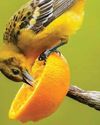
Sense or Nonsense? - Why some birds can taste and smell - but others can't
Does a porcelain berry taste like a blueberry to a gray catbird? Does a block of lard smell like frying bacon to a northern flicker? The short answer is no. While some avian species do have a well-adapted sense of taste or smell, they can't distinguish between flavors and odors the way humans can. They're not picking up every ingredient in the suet you put out, says José Ramírez-Garofalo, an ornithology researcher at Rutgers University in New Jersey and the director of Freshkills Biological Station in Staten Island, New York.

Maple Mania - Amazing facts about this fall foliage mainstay
Amazing facts about this fall foliage mainstay